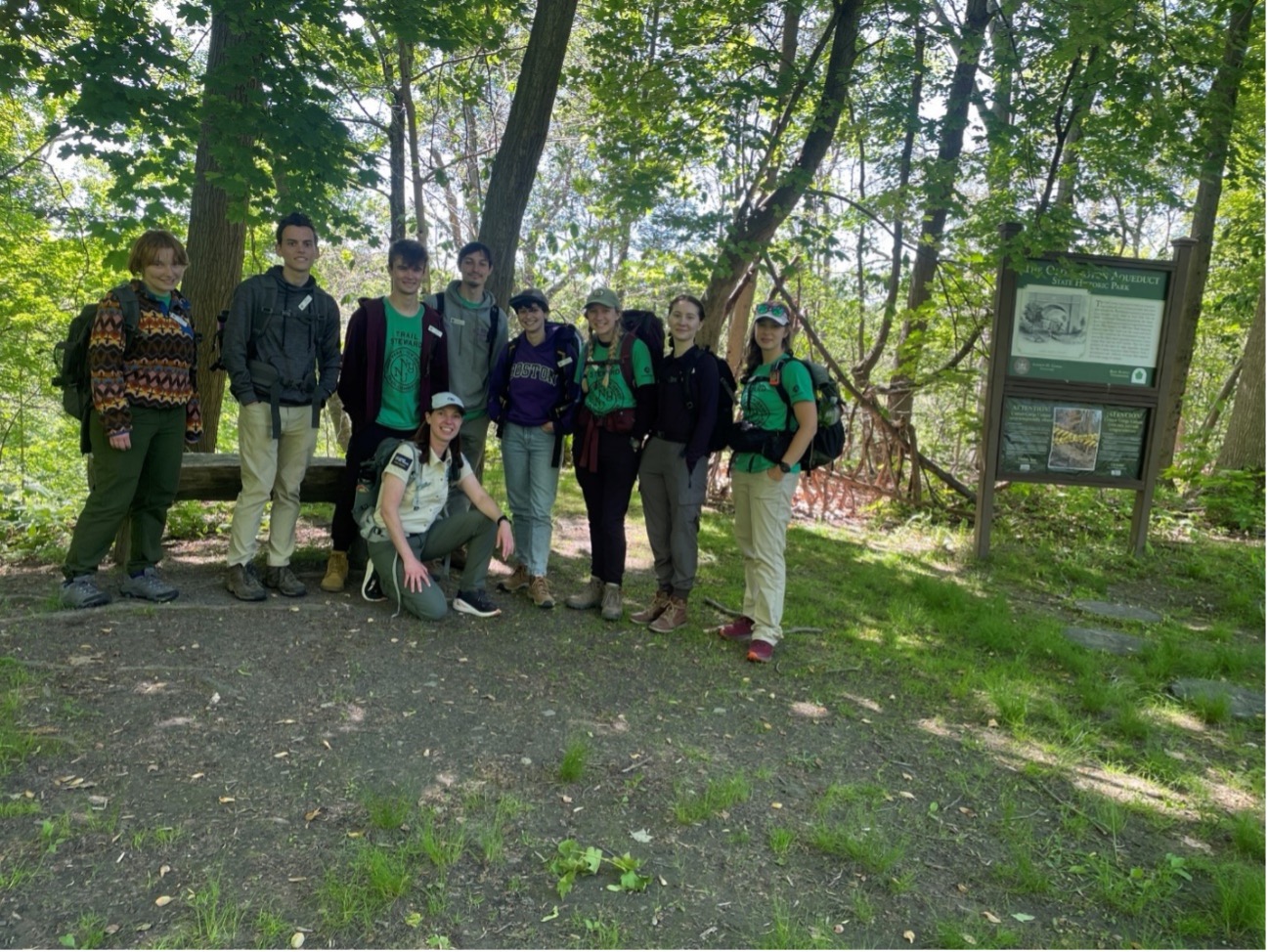
Aqueduct Trail Ambassadors, aka the NY NJ Trail Stewards posted by the entrance to the Unique Area.
I took this photo on their first day of orientation and training just prior to the start of the season on Memorial Day weekend. Myra Romano, front and center, is the Program Coordinator.
The Unique Area is temporarily closed since there is no safe way to access the riverside; we are waiting for the Draft Management Plan to be approved; it is being held up because of significant controversy and funding issues involving another property upstate that is also contained in the Plan. The switchback trail is included in the Plan but cannot be designed nor constructed until the Plan is officially approved, so the Trail Stwards are tasked with explaining this to potential visitors to the riverside. However, word has apparently gotten out, since in the past three weekends there has not been even one visitor attempting to access the Unique Area.
So, in the meantime the Stewardship Program has agreed to assign the Stewards to be Aqueduct Trail Ambassadors. Two each are assigned to the Trail on weekends and holidays. They park in my driveway and store their equipment in my shed and I give them access to my house so they can use the bathroom.
Their first training day was held in my back yard. The morning was spent in orientation and role plays about how to deal with the potential visitors to the Unique Area and Aquedct trail walkers, bikers and dog walkers. I provided them with the history of how the Trail Conference came to be involved with the Unique Area and my role: coordinating with the DEC, with the Park staff, with the Friends of the Old Croton Aquedct, with the neighbors, with the various municipalities, and with the various enforcement entities.
In the afternoon of their training day they walked to the dam and back. I accompanied them part way.
Here they are on the first leg of their journey. I am explaining about the Ventilation Tower.
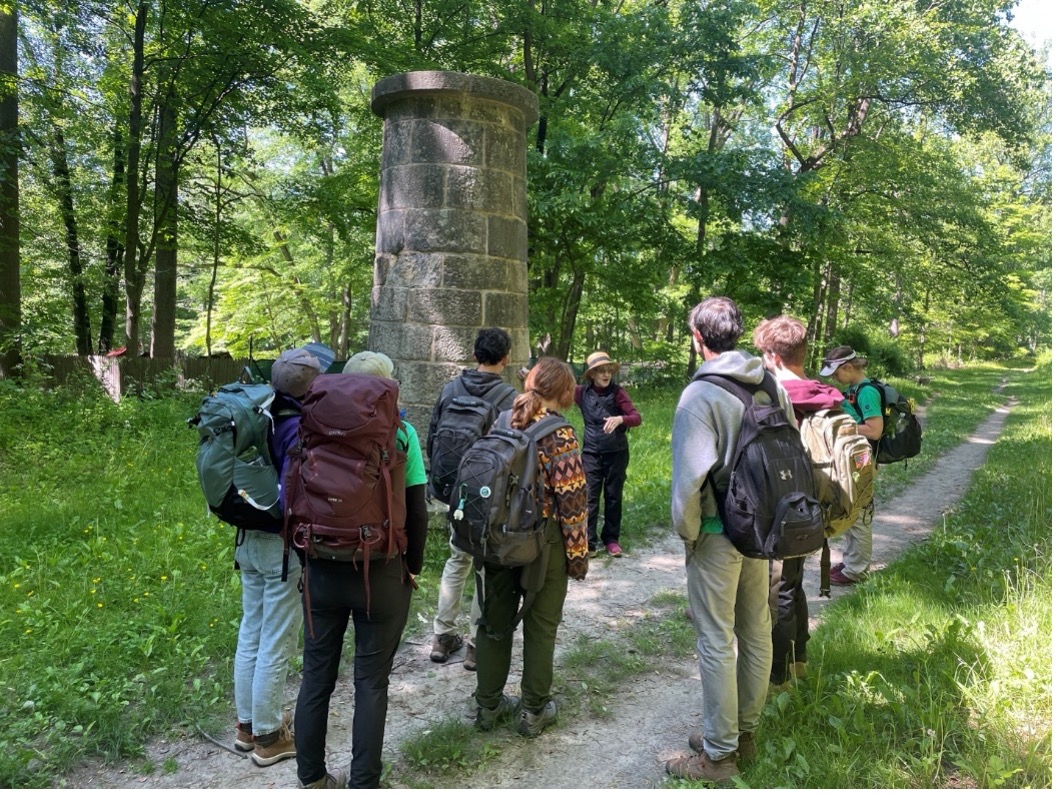
The plan is to give them an extensive orientation to the Aqueduct so they can be knowledgeable in doing their work as Ambassadors. On their next training day they parked at Gerlach Park, climbed up the stairs to the Aqueduct where they were met by Daria Gregg who showed them the section she has adopted and where she has installed a Pollinator meadow. Then Daria accompanied them on the first leg of their walk to the Ossining Weir.
Here they are finding their way, maps in hand. The plan was for them to meet Sara Kelsey, member of the Friends at the Weir for a tour.


Sara met them and gave them a wonderful tour, as she always does. She tailored it to the Stewards and gave them lots of background and history. She and Daria then ferried them back to their cars at Gerlach Park.
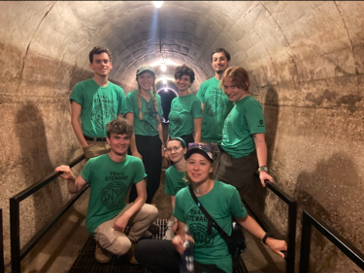
My challenge to the stewards was to be pro-active and creative and make suggestions for what they could do in their role as Aqueduct Trail Ambassadors. The first suggestion they came up with was to provide a dog bowl with water, so right away I gave them one plus a supply of fresh water. This has endeared them to the dog walkers.

Their next idea came as a result of some bike riders who requested reflective tape on the bars along the entrances, and also requested a suggestion box. So, I ordered the tape and the next week they started the process of installing the tape. So far six of the seven bars now have reflective tape installed on them.
I also ordered a suggestion box which Sydney decorated. See above and below.
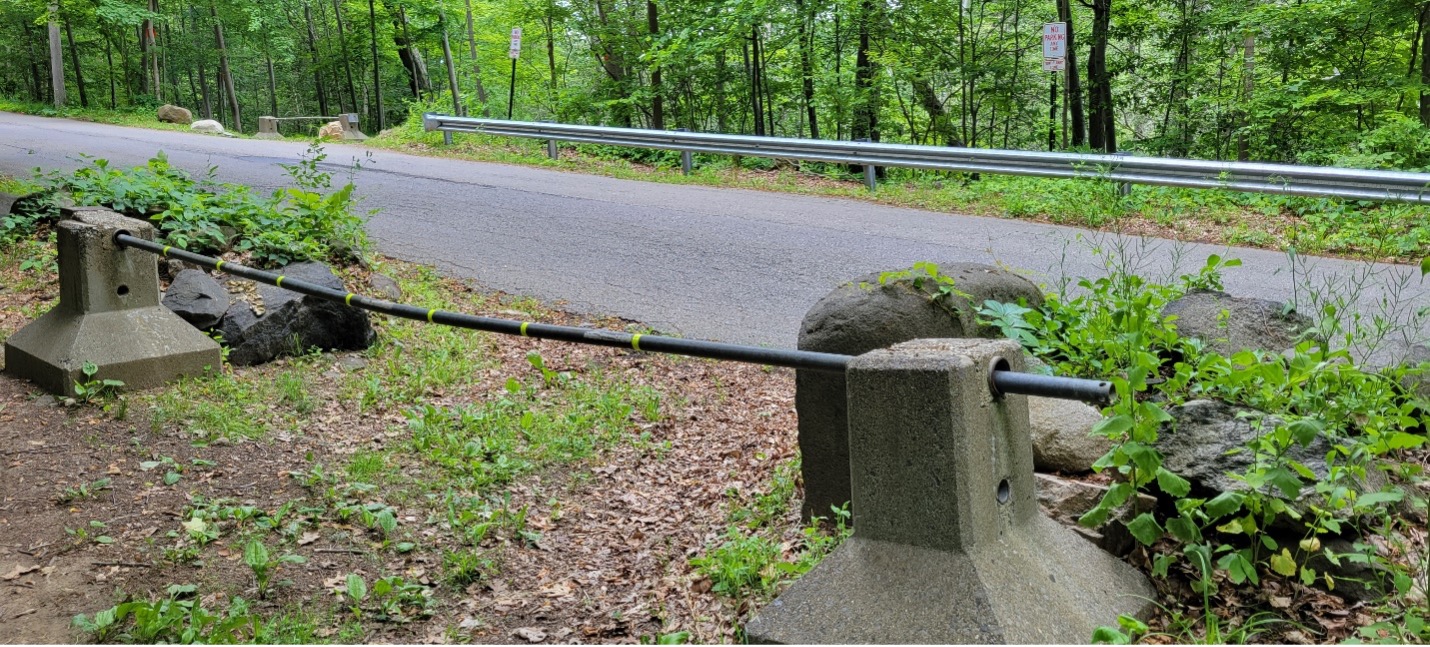
The Stewards continued to keep their antennae open for other improvements. They noticed that not all Trail walkers parked in the small Access Area in a considerate manner, at times taking up so much space that only two of the three available spots could be used. So, they requested that striping be installed. After discussing this with Steve Oakes, the Historic Site Manager, I bought them chalk which they used to designate parking spots. They will have to refresh this every weekend, which they have been doing. Numbering the spots was an additional innovation:
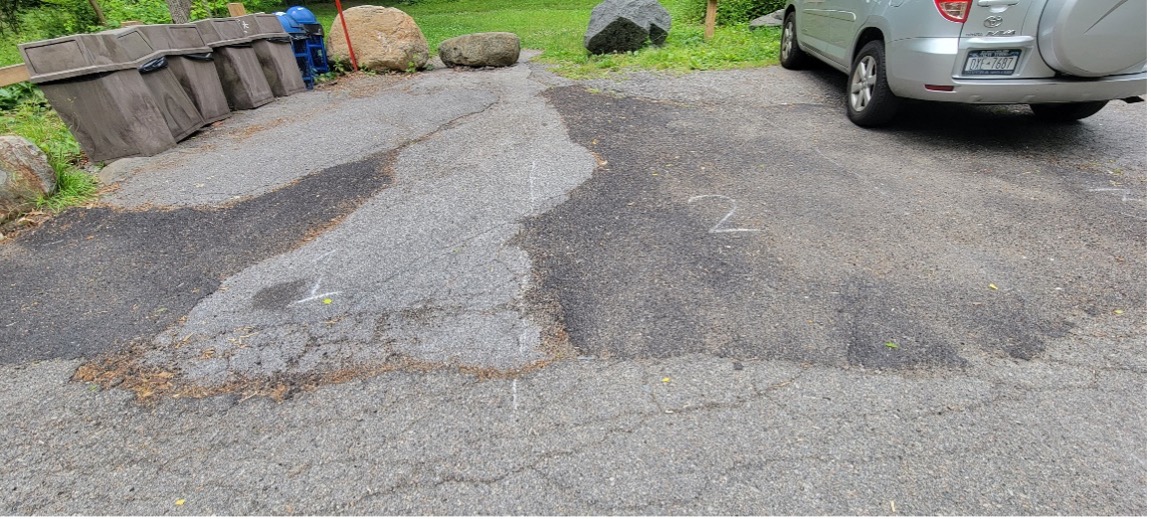
They are also responsive to requests from me. Since some youngsters on ILMPD built a creative art project, that unbeknownst to them provided a visual and actual barrier to an access point to a very dangerous and eroded slope leading down to the riverside, I asked the Stewards to reinforce it, which they did.
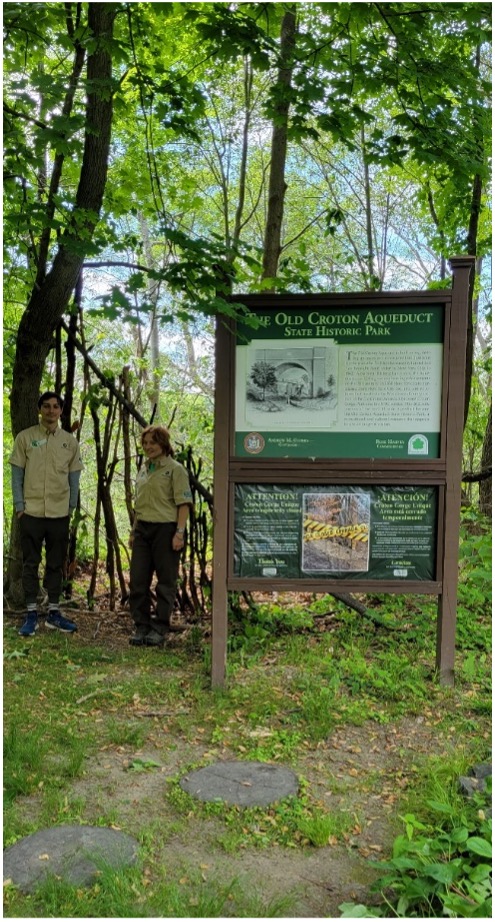
One weekend they rebuilt it with some grapevines we removed from some trees. The next weekend a different crew used the grapevines to weave among the upright sticks to further stabilize it.
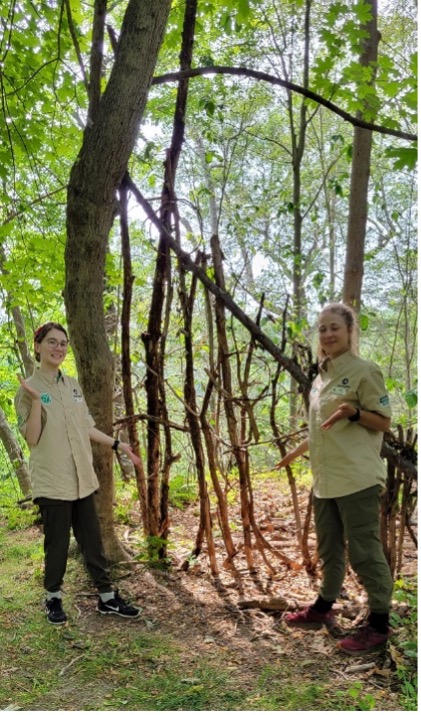
Next came a day of training in learning to identify and manage the invasive plants on the trail. Brent Boscarino, Coordinator of the Lower Hudson Partnership for Regional Invasive Species Management (PRISM) was recruited to walk with the Stewards and yours truly to give them pointers regarding plant ID and to help select a target location for interevention. I had several candidates and Brent suggested an area by a stone wall where invasive removal would have the greatest impact on both the ecosystem and on the experience of trail walkers.
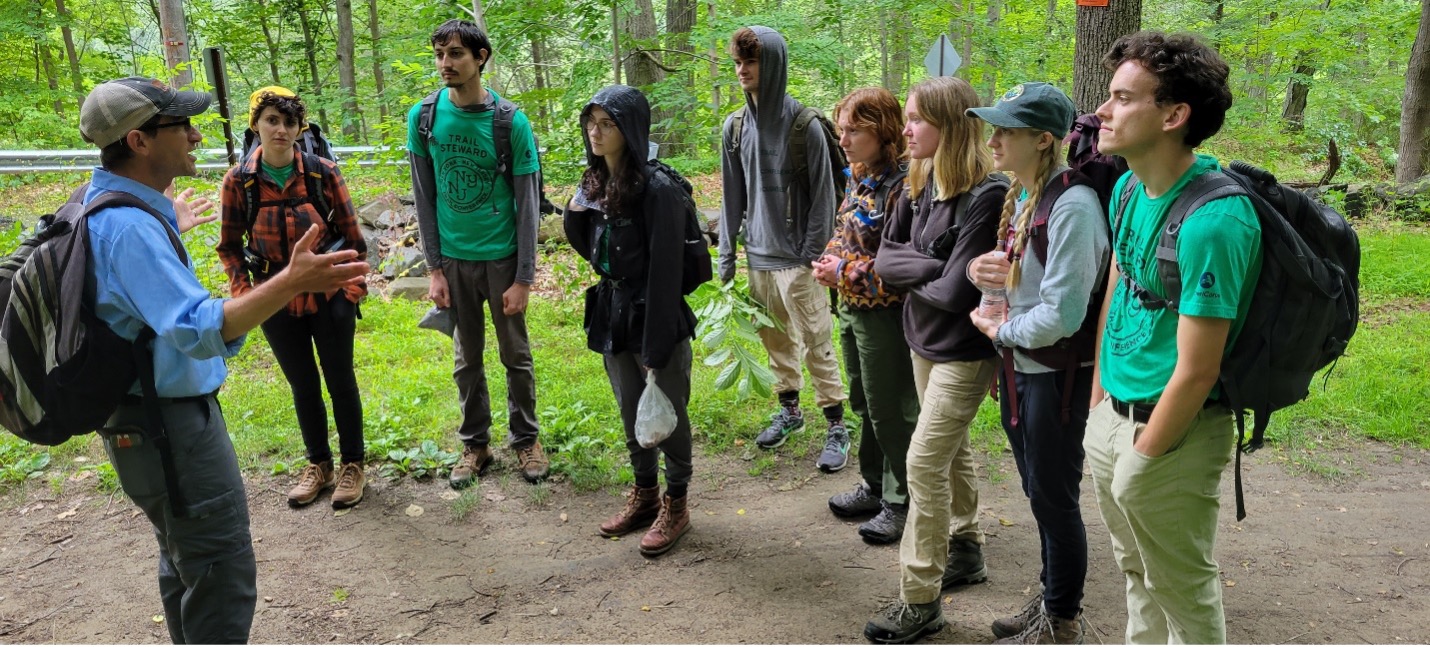
The rain held off almost until we reached home base.
The next part of the training involved a discussion of the reasons why we are targeting invasive species for management.
During the afternoon we worked on identification, focusing on some specifics of how to look at a plant, following Thoreau’s admonition: It’s not what you look at, it’s how you look and whether you see. Each steward was challenged to select an invasive plant from the samples provided and draw it. They then presented their drawings to the group, discussed the salient features; identified the plants, and discussed the specific harms to the ecosystem that each species presents.
Here they are working diligently on their drawings.

Declan made this drawing of Chocolate vine, which we discovered today growing on the trail; first sighting of it. You can see the sample on the table in a jar which he is using as his subject.

Kathrine chose a native plant to draw; a Black raspberry with red berries that had not yet ripened into the black berries. The red berries can also be seen on the table.
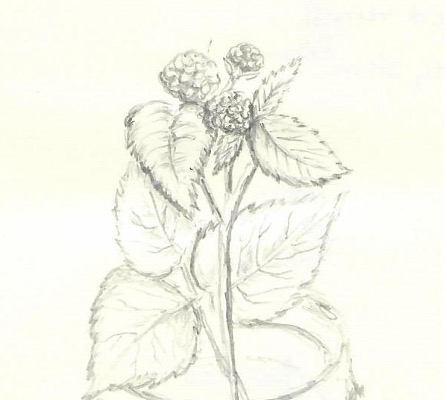
We contrasted this with the highly invasive Wineberry, drawn by Sydney. The berries are not yet open, with a protective covering that will open when the berries become close to being ripe. This is also a raspberry, but one we wish to remove from the trail.
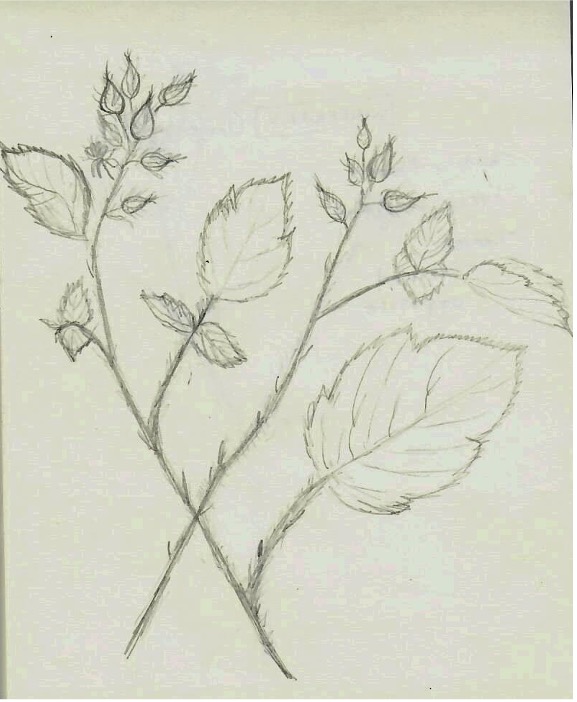
One of the questions that came up was about the edibility of some of the plants. On our walk in the morning, I had asked the group to gather some of the leaves of the first-year garlic mustard plants that are now emerging and during the lunch break I used them to make a garlic mustard hummus for them to sample. Since a Black birch tree had been cut down on the trail, I also gathered some twigs to add to the green tea I served them. Here they are, happy to collaborate with the selfie photo taken by Phoenix showing off their goodies.
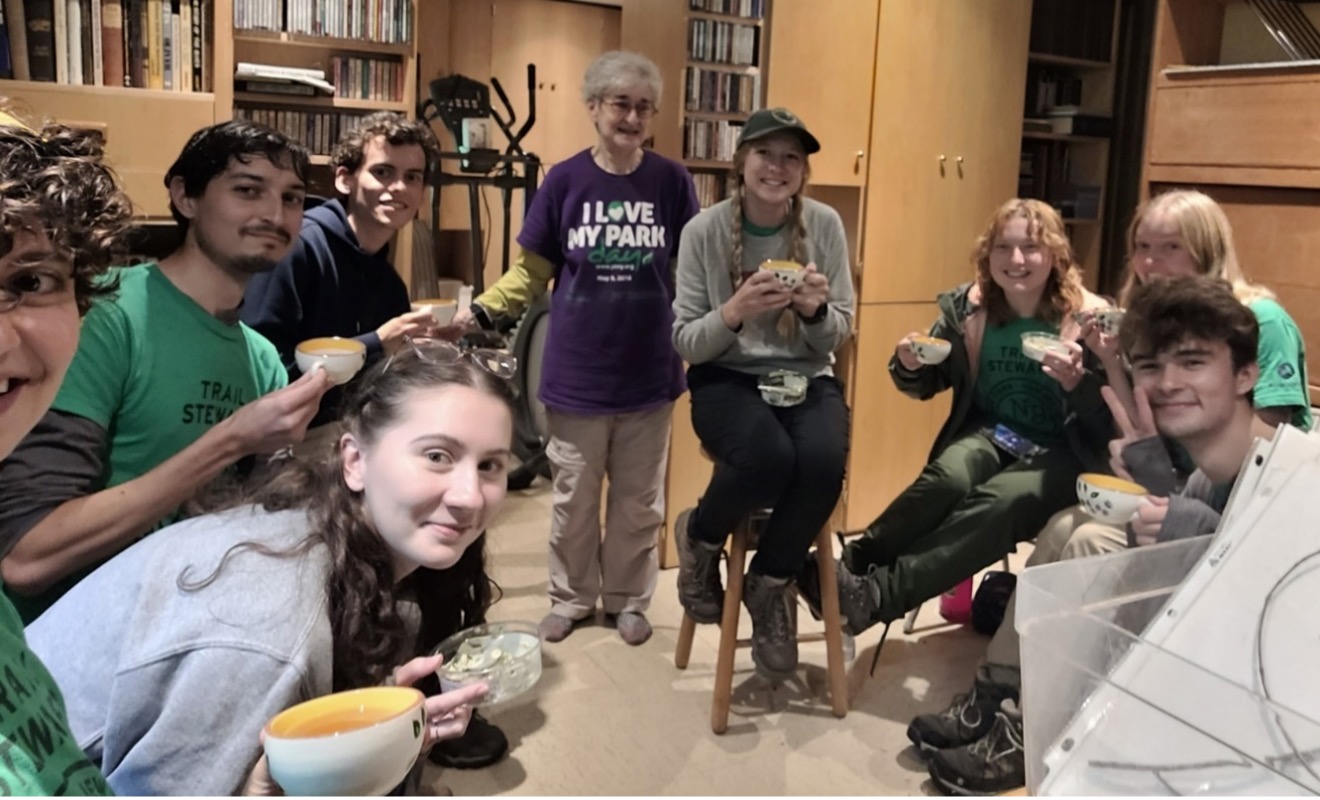
In the late afternoon we walked on the trail in Ossining, with the task of removing as much Cardamine impatiens (Narrow leaved bittercress) and Lapasana communis (Common nipplewort) from the base of this recently restored historic stone wall. The bittercress is starting to set seed and the Nipplewort is flowering, so this is the ideal time to remove them, along with the ubiquitous Garlic mustard which is also about to drop its seeds.
Here are Ryan and Phoenix pulling the plants from the base of the stone wall.
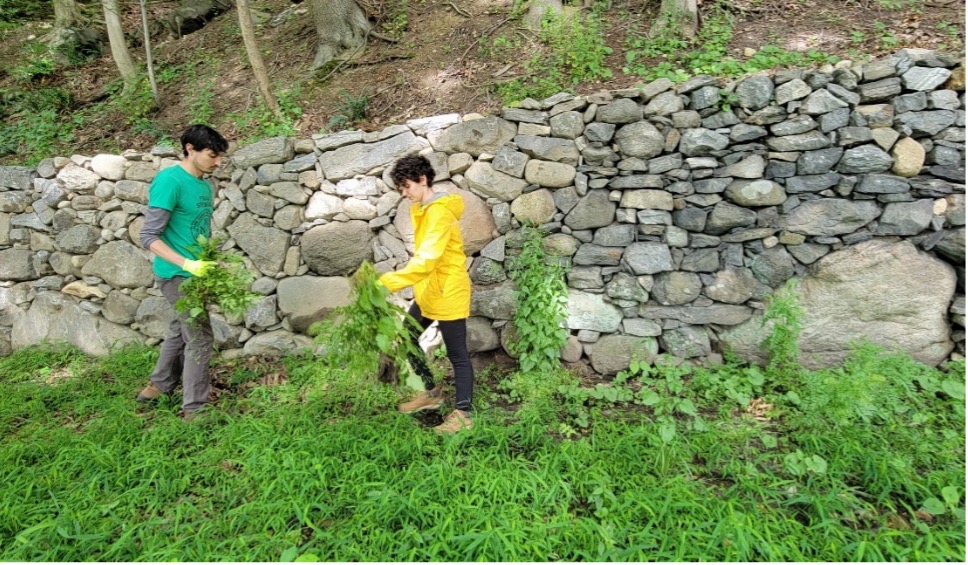
All three of these plants have edible properties, but caution is advised since several other invasive plants on the trail are deadly poisonous.

Eleanor and Christina proudly displaying their haul of very tall Cardamine impatiens, Narrow leaved bittercress, in the mustard family.
Christina was thrilled to find edible native wild black raspberries fruiting on the trail, so this was an excellent opportunity to contrast them with the also edible but very invasive Wineberry plants which are currently not ripe, with the berries encased in a fuzzy covering as detailed in the drawings above.
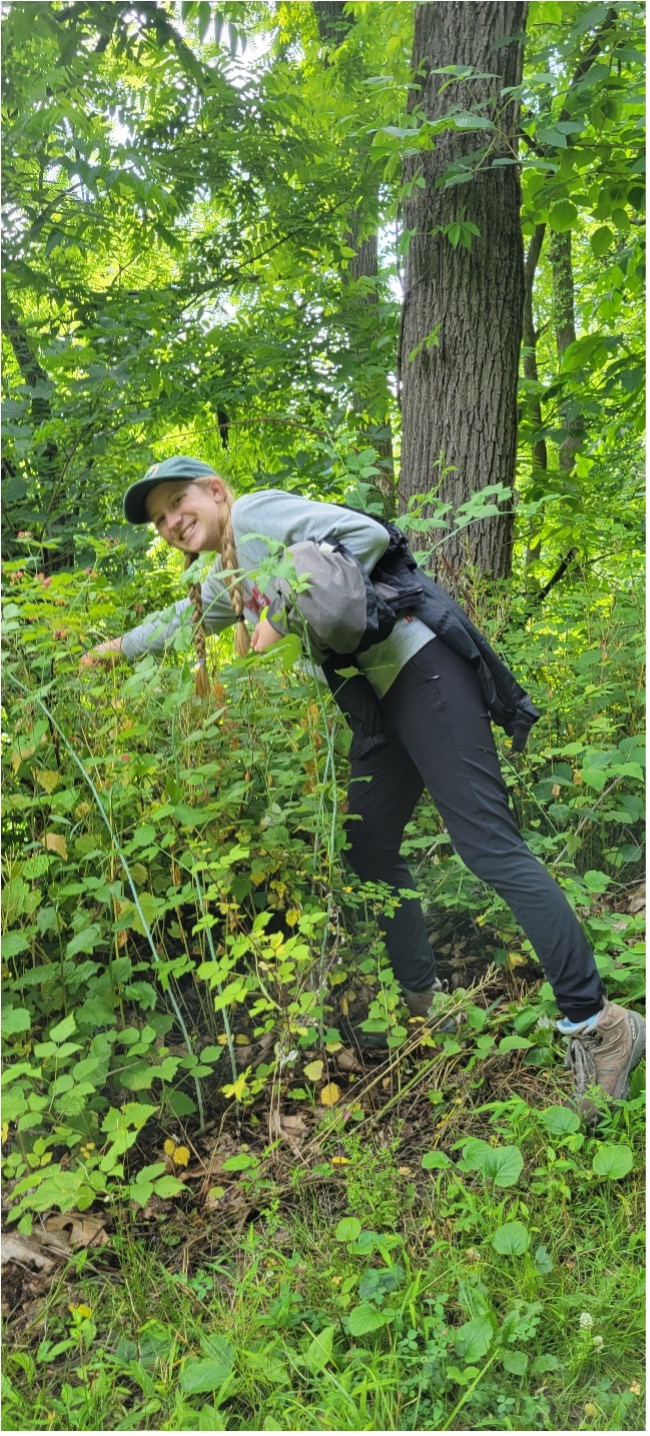
Ben discovered Tree of Heaven, Ailanthus altissima, growing in the woods above the stone wall, and did his best to pull them up by the roots, but decided to leave the rest for another day when we could use tools to remove them without leaving any remnants of the roots which could easily resprout. These plants are hosts for the invasive Spotted lantern fly currently invading areas in the river towns of Westchester, including on the Aqueduct Trail.
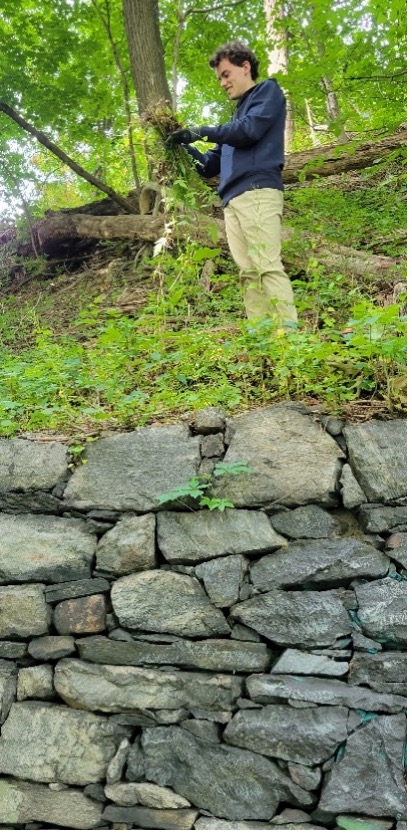
Here are all eight of the Stewards, with their Crew Leader, Ryan McClean, on the left, proud to have removed 43 pounds of invasive plants as part of their first day of Invasive Species training. Their training will be put to use during three planned invasive removal projects to take place later during the season, one each in the months of July, August and September.


